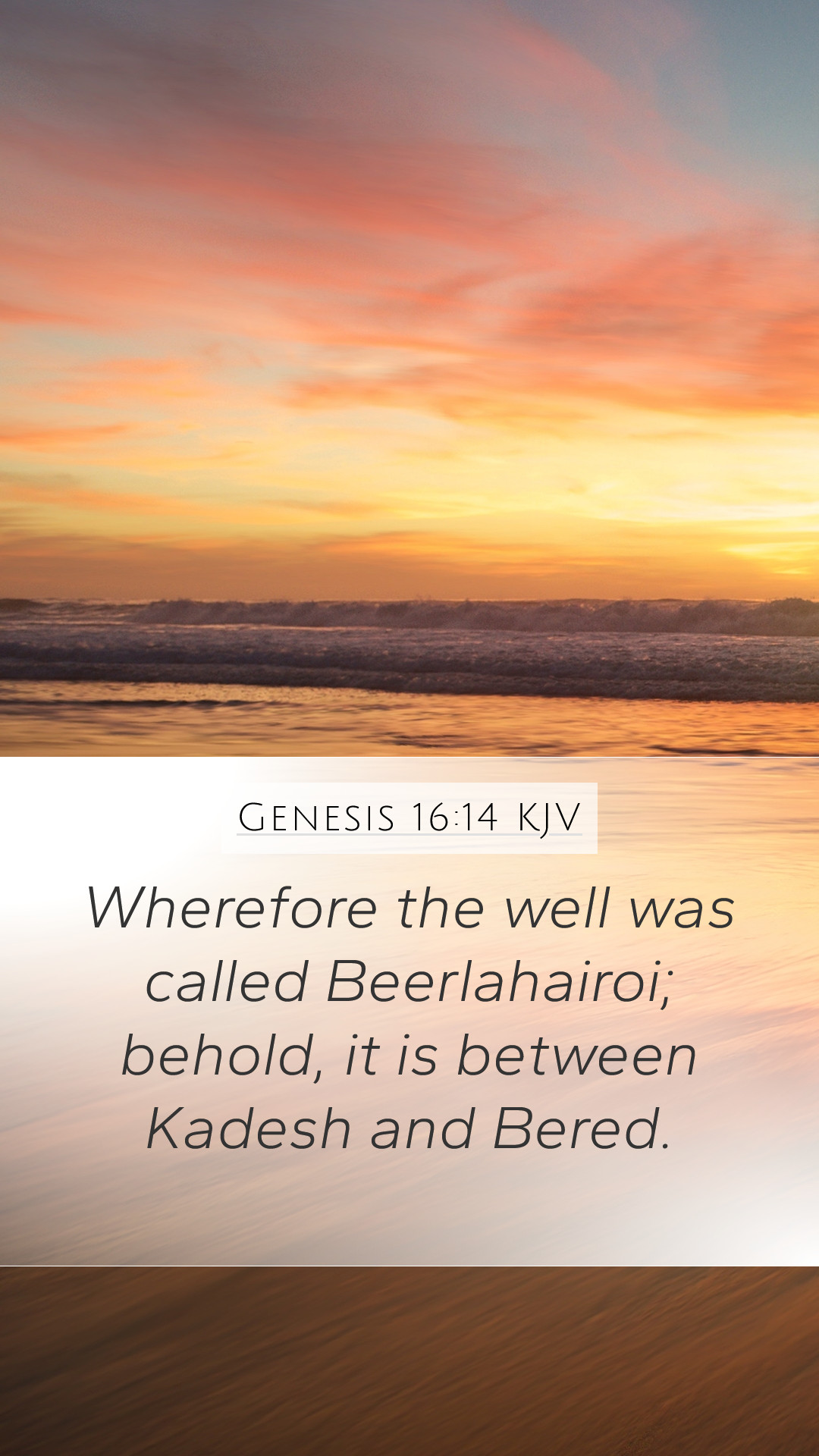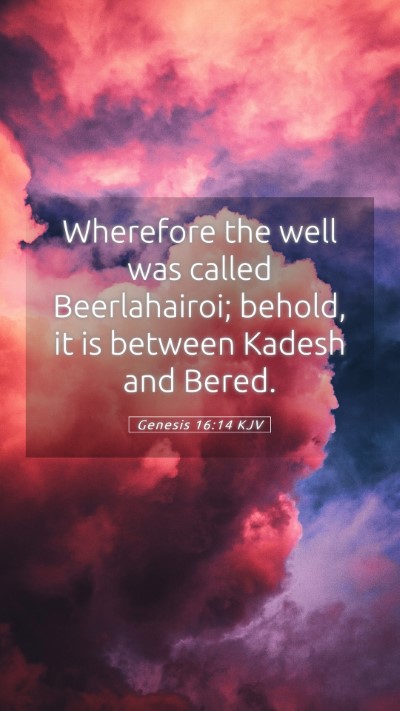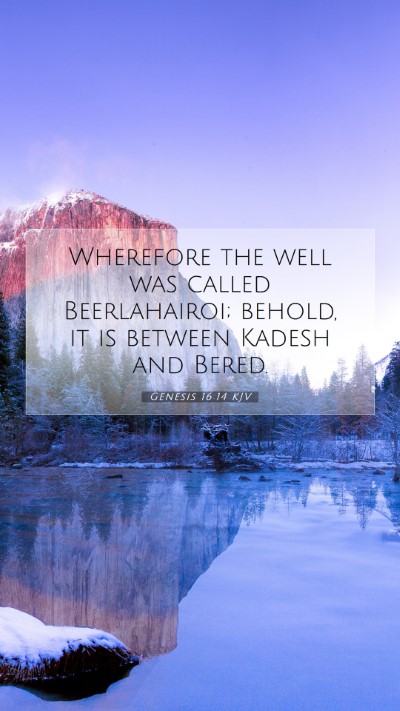Understanding Genesis 16:14: A Comprehensive Bible Verse Commentary
Genesis 16:14 (KJV): "Wherefore the well was called Beerlahairoi; behold, it is between Kadesh and Bered."
This verse serves as a geographical note that references a significant well named Beerlahairoi, which translates to "the well of the Living One who sees me." It highlights the divine awareness and care in the life of Hagar, who finds herself in a desperate situation. The inclusion of this detail in the biblical narrative carries profound theological and symbolic meaning.
1. Significance of Beerlahairoi
The term "Beerlahairoi" indicates a well that embodies God’s presence and recognition of Hagar's plight. Both Matthew Henry and Albert Barnes emphasize that this well symbolizes a place of divine intervention.
- Matthew Henry: Henry underscores the importance of God's providence in the desert, highlighting how the well signifies God's provision in Hagar's time of need.
- Albert Barnes: Barnes notes that the well serves as a reminder of God's awareness of individual suffering, representing a personal relationship between God and those in distress.
- Adam Clarke: Clarke adds that the well’s location “between Kadesh and Bered” has implications for the Israelites' later journey, suggesting that God’s provision is accessible throughout their travels.
2. Theological Implications
The mention of God's attribute as “the Living One who sees me” indicates profound theological truths regarding God’s nature and His relationship with humanity. This verse affirms that God is not distant but intimately involved in the situations of His creation.
- Spirit of Care: The passage illustrates God's merciful provisions even in dire situations.
- Divine Awareness: It emphasizes God’s omniscience in recognizing our struggles.
- Hope and Encouragement: The well itself becomes a source of hope for those facing adversity, showcasing that God meets us in our lowest points.
3. Application for Today’s Believer
Understanding Genesis 16:14 prompts several practical applications for believers today:
- God Sees You: Just as God saw Hagar in her distress, He sees individuals today in their trials and suffering.
- Look for God’s Provisions: The well signifies the need to recognize and appreciate God’s provisions in our lives.
- Trust in His Presence: Believers are encouraged to trust that even in difficult circumstances, God is present and aware.
4. Cross References
This verse can be related to several other Biblical passages that enhance its meaning:
- Genesis 21:19: Hagar receives divine guidance in the wilderness once more.
- Psalms 139:7-10: The assurance that there is nowhere to flee from God’s presence.
- Matthew 10:29-31: The idea that God cares for even the smallest details of our lives.
5. Conclusion
In conclusion, Genesis 16:14 is not merely a geographical reference but a rich testament to God’s providence, awareness, and intimate care for those in distress. It offers profound Bible verse interpretations that remind us of God’s unchanging nature and His active role in our lives. As you study this verse, may it deepen your Bible verse understanding and encourage you in your walk of faith.
6. Further Bible Study
If you desire to delve deeper into Scripture analysis and biblical exegesis, consider joining a Bible study group or utilizing online Bible study tools. There are various Bible study resources available, including guides and lessons that cover the historical context and applications of Scripture.


